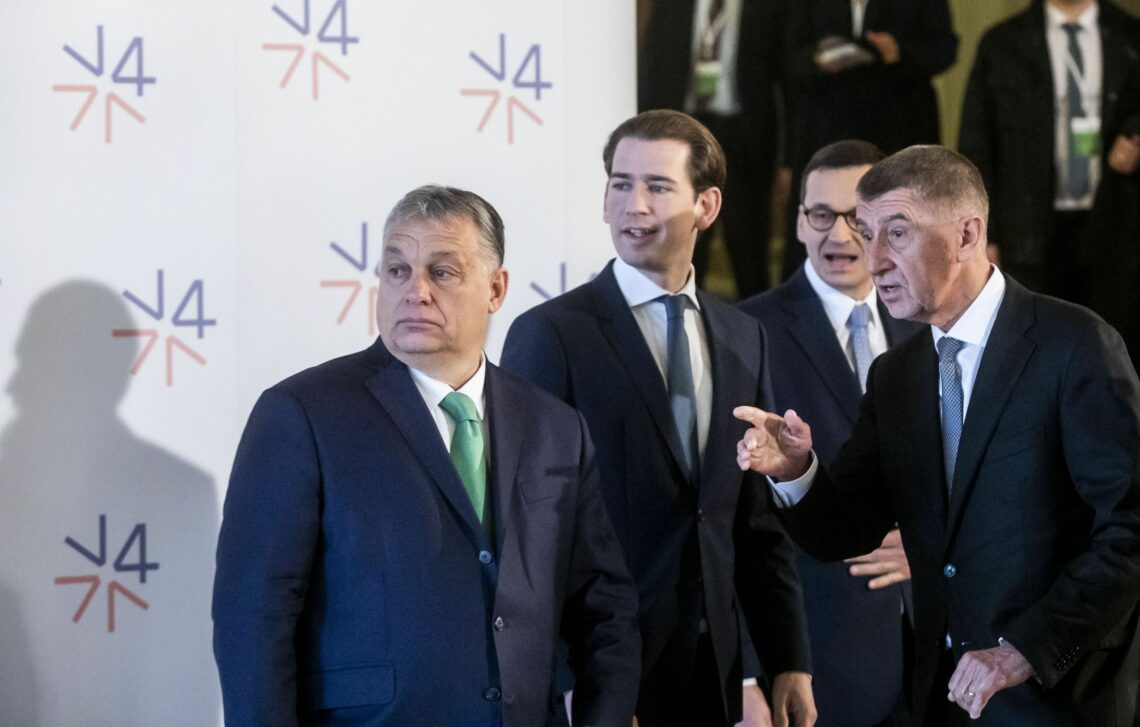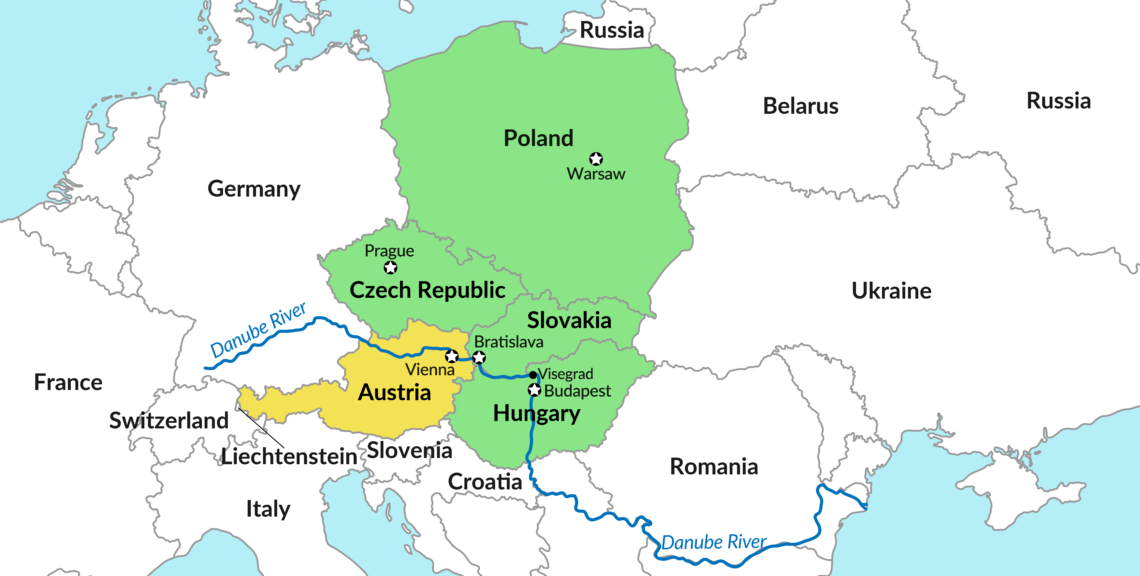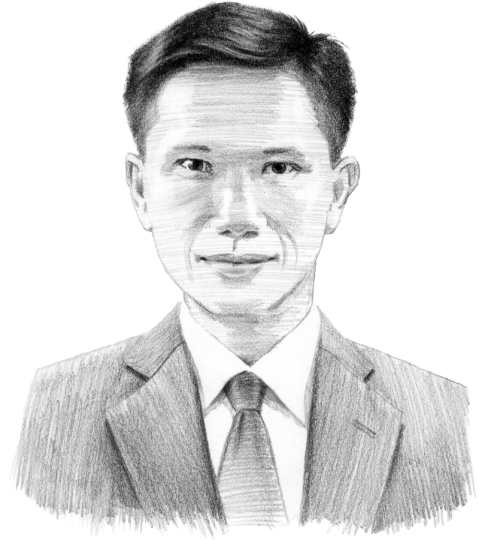Austria and Visegrad: Interests converge in Central Europe
The Visegrad Group, consisting of the Czech Republic, Hungary, Poland and Slovakia, initially had little political importance. But with pressure from EU institutions increasing, the forum has grown in significance. Could Austria soon join the Visegrad Group?

In a nutshell
- The Visegrad Group has gained new political importance
- Austria has strengthened ties with these countries
- The partnership will push back against EU pressure
As the Iron Curtain crumbled at the end of the last century, more than a dozen regional and subregional partnerships were established in Central Europe. The first was the Central European Initiative (CEI), founded in November 1989 in Budapest by Italy, Austria and Yugoslavia. It now includes 18 countries between the Baltic, Adriatic and Black Seas but has few significant accomplishments. Politically, the organization is a lightweight. Its activities rarely attract public attention.
Only the Visegrad Group, also known as the V4 – which consists of the Czech Republic, Hungary, Poland and Slovakia – is politically relevant. It was founded in February 1991 at the Visegrad fortress on the Danube River, where the kings of Bohemia, Poland and Hungary met in 1335 to discuss a joint strategy against the Habsburgs.
Polish President Lech Walesa (1990-1995), Hungarian Prime Minister Jozsef Antall (1990-1993) and Czechoslovakian President Vaclav Havel (1989-1992) had chosen the site with care. The initiative attested to the allure of the Central European idea, but also made clear their desire to exclude Austria.
Finding the center
The history of the Central European renaissance in Austria and today’s V4 states goes back to 1984 when Czech writer Milan Kundera wrote the essay “The Tragedy of Central Europe.” The region, he argued, belonged politically to the East but culturally to the West. Only by overcoming this dichotomy could Europe recover its lost “center.”
In Austria and in Czech, Slovak, Polish and Hungarian dissident circles, Mr. Kundera’s essay started a lively debate on how the lost “center of Europe” could be culturally, economically and, ultimately, politically reconstructed after the end of the communist regime. As long as the Soviet empire existed, there was agreement on the Central European idea’s consensus-building and subversive character.
During the Cold War, the term ‘Central Europe’ implied the common resistance to the Sovietization of the region
During the Cold War, the term “Central Europe” implied the common resistance to the Sovietization of the region, referring to its unique historical and cultural characteristics. Soon after the end of the Soviet empire, however, differing views emerged about the reorganization of this part of Europe.
In Austria, “Central Europe” evoked memories of the supranational Austro-Hungarian Empire. In 1986 two Austrian Christian-democratic intellectuals, Erhard Busek and Emil Brix, presented a “Project Central Europe” (“Projekt Mitteleuropa”) that was supposed to transcend state borders and national narratives.
Although the Czechs, Slovaks, Poles and Hungarians had long since dismissed the myth that the Habsburg Empire was a “dungeon of peoples” after their experiences with totalitarianism, such initiatives did not go down well with them. Nobody openly accused Vienna of wanting to restore its former empire. However, the suspicion that the “Central Europe” project was primarily a vehicle for Austrian interests persists.
Escaping the trap
The concept of a new, supranational order for Central European states was quickly forgotten. The Austrian government concentrated entirely on the negotiations with the European Union, which began in 1993 and led to Austria’s accession in 1995. Politicians and diplomats refrained from emphasizing the country’s specific Central European character and instead endeavored to present Austria, which was already firmly anchored in Western Europe, as a “bridge to the West” and “docking station” for EU candidate countries.
Regional cooperation quickly lost its political importance. In 2018, Austria even left the CEI, to the great regret of Mr. Busek and his colleagues. They accused the government at the time of jeopardizing Austrian influence with neighboring countries and leaving the field to the “illiberal” Hungarians.
Facts & figures

Poland, Slovakia, the Czech Republic and Hungary joined NATO in 1999 and the EU in 2004. Pragmatic Western policy replaced Central European initiatives. Their political elites lost interest in the Visegrad Group. Czech President Vaclav Klaus (2003-2013) made statements that exemplified the attitude at the time. Before his country’s EU accession, he warned that the V4 would degenerate into a “waiting room” for EU aspirants. After the Czech Republic and the other three countries joined, he feared that the Visegrad Group would consolidate its members’ status as second-rate EU states. Instead of offering hope for moving forward, Visegrad was seen as a trap these countries needed to escape.
Strengthening bonds
The cohesion of the Visegrad Group is not the result of a supranational Central European identity that would have turned out to be stronger than the lure of the West and the national identities of the partner states. There are considerable differences in the mentality and political culture of the partner countries. Poland and Hungary can look back on centuries of statehood and regional hegemony that the Czechs and Slovaks lack. More than 70 percent of the population does not belong to any religious community in the Czech Republic, while Poland is almost 90 percent Catholic.
Poles, Slovaks, Czechs and Hungarians, however, due to their shared experience as satellite states of the Soviet Union, are particularly intent on preserving their national sovereignty, which has caused them several problems with other EU member states. In November 2020, one of these conflicts resulted in a real crisis, when Poland and Hungary threatened to veto the EU budget and the Covid-19 recovery fund it contained.
The disagreement centered on a mechanism that would allow the EU to financially sanction member states if they violate the rule of law. Polish Justice Minister Zbigniew Ziobro said that Poland must defend its sovereignty against “political and institutionalized slavery.” Hungarian Justice Minister Judit Varga accused the EU of blackmail. The sides came to a compromise whereby the EU would delay implementation.
Increasing pressure from outside helped the postcommunist countries realize their common interests.
This increasing pressure from outside, mainly from the European Commission and the governments of Germany and France, helped the postcommunist countries realize their common interests and gave the Visegrad Group political weight. However, this commonality never went far enough for them to institutionalize their cooperation further.
Part of the reason for this is the difference in the countries’ geopolitical clout. With its 38 million inhabitants, Poland is not only the largest country in the group – followed by the Czech Republic (10.7 million), Hungary (9.7 million) and Slovakia (5.5 million) – but also the most ambitious in terms of foreign policy. Their interests diverge, too. Poland prioritizes defense against Russian influence, while the other countries try to foster more amicable relations with Moscow. Hungary especially has repeatedly been accused of becoming too cozy with Russia.
All of the Visegrad governments oppose the German-Russian Nord Stream 2 pipeline, which they fear will endanger the supply of natural gas to Central and Eastern Europe. On the other hand, the Austrian energy firm OMV has invested in the project and Vienna supports it. The poisoning of Russian opposition leader Alexey Navalny sparked a heated debate in Germany about whether work on the pipeline should stop. But in Austria, President Alexander Van der Bellen and Chancellor Sebastian Kurz have stressed that they see no reason for OMV to give up its involvement, which they have characterized as purely commercial.
Only after Vienna expressed understanding for opposition to mandatory admission of refugees did the rapprochement begin.
Under Mr. Kurz as chancellor – from December 2017 to May 2019 in a coalition with the Freedom Party and since January 2020, in a coalition with the Greens – ties between Austria and the Visegrad Group have strengthened. Chancellor Kurz was the first Austrian head of government to participate in a V4 summit in Budapest in June 2018. He attended again in Prague in January 2020.
Czech President Milos Zeman had wanted to invite Austria to the Visegrad Group consultations as early as 2014, but Hungary opposed the move. Only after the migration crisis of 2015, when then-Foreign Minister Kurz expressed understanding for the V4 governments’ opposition to EU calls for mandatory admission of refugees and migrants, did the rapprochement begin in earnest. Mr. Kurz ruled out Austria joining the Visegrad Group, however. Vienna’s current position is that it does not stand on either side of the conflict between the EU and the V4, but rather sees itself as a mediator.
In Austria, only the Freedom Party and the small Central European parliamentary group of the old Austrian People’s Party, centered around Mr. Busek, advocate Visegrad Group membership. However, their reasons are diametrically opposed. While the Freedom Party likes the conservative, Euroskeptic stance of Poland and Hungary, especially as embodied by Hungarian President Viktor Orban, the “Central Europeans” favor accession precisely because they believe it is the best way to prevent the region from being “orbanized.”
Scenarios
By far, the most likely scenario is that relations between Austria and the V4 group will intensify because they have a common interest in weakening the Franco-German axis in Europe. However, the institutionalization of cooperation, especially through expansion, will not occur. Austria will continue to try to act as a mediator.
A far less likely scenario would see Austria joining the Visegrad Group. There are two ways this could come about. In the first, the right-wing populists in Austria become strong enough to make the option part of government policy at the same time that the conflicts between the EU and the Visegrad countries intensify, or even lead to a rupture.
The other possibility would see new governments in Austria and in the V4 states radically change their countries’ current stances, to the point where their policies are in line with that of the EU majority. However, that would make the group superfluous. It would become merely one of the many regional talking shops whose political relevance dwindles toward zero.







